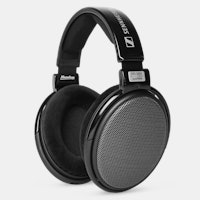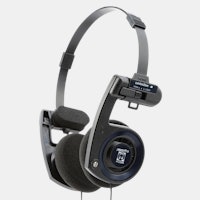Click to view our Accessibility Statement or contact us with accessibility-related questions









What is the frequency response and Impedance. Please respond me.
0% upvoted

Cancel
search
close
Sort by: Newest
keyboard_arrow_down
SuperFlyEDSguy
61
Nov 18, 2023
As the IEM cable is passive it would be measured in resistance or the inverse of simple DC conductivity. Impedance on the other hand measures the inverse of AC conductivity and is used in audio since audio is based on waves, which is essentially AC by definition. As a simple IEM cable is a standalone item until put into an audio chain we could see how resistive it is with a basic multimeter. You should find that the standard cable is approximately 1Ω and the premium cable is about 0.3Ω. These may be several percent off due to manufacturing constraints, but I’d think that they would yield no more than about a 10% tolerance. Both of these values are VERY good as they will be extremely conductive!
Now, I mentioned that resistance is used when measuring a DC circuit, and impedeance is used when measuring an AC circuit. This is due to the fact that aside from the natural resistance of the components in an AC circuit, you will also have to account for reactance which is how much the capacitance or inductance is effecting the resistance as well as how it effects the phase of the waves, e.g. making it lead or lag. Surprisingly, if you’d really like to test for the impedeance of an IEM cable, you could do it, yes, you read me right that it could be done… but how?!
First, I would venture to say that resistance provides a more than suitable indication for how a cable should perform, but being that there are twists and multiple wires involved, I’m quite certain that you will see a slightly different impedeance value as the items I just pointed out will have some reactance, albeit probably very little. The way you would test a cable for impedeance cannot be done with a regular multimeter, you would need to use a specialized tester called an LCR Tester. I personally use a DER EE DE-5000 unit and without getting any more complex you basically hook it up to the cable, but you will set a frequency value to conduct the test at, the industry standard is 1kHz. Actually, if you hook a pair of headphones to a LCR Tester, you would actually hear the tone when checking the impedeance! I tried this with my Tin HiFi T2 Pro IEMs and it returned an impedeance value of exactly 16Ω, just as it should when tested at 1kHz! BTW, hearing the frequency noise through the IEMs was really cool to see it all in action! Similarly, you could test pretty much anything for impedeance with an LCR meter, and you could do it at other frequencies, but like I said, 1kHz is the baseline in audio. Likewise, you could test for, and get very accurate inductance and capacitance results, so my DE-5000 is my “go to” device when I want to find a capacitor with the best tolerance out of a bag of several pieces. It’s simply far more accurate than a multimeter though I do have several of those that I use regularly with my Fluke and Brymen being my “go to” meters. I use those for finding resistance values, but it may surprise you that simple continuity is the number one thing that I grab a multimeter for!
Finally, as stated by others, the frequency response is not a characteristic of the wires, rather it is of the speakers when dealing with headphones or IEMs. Generally, most speakers will fall within 10Hz to 20Hz on the low end on upto 20kHz on the high end. This is to ensure that it covers the gamut of human hearing that an adult human falls well within this range. Actually, as we age, that top number gets lower and lower for us! We can perceive higher frequencies, but that’s another whole complex topic, but the point that I am getting at is that HD audio pushes those extremes well beyond a cap of 20kHz! There’s a whole study to this called psychoacoustics that discusses how our brains react to all sounds, even those we technically cannot hear, but may perceive the vibrations of and the like! BTW, headphones or IEMs with multiple drivers will split this range up using crossover circuits to allow the most capable speaker in the range to operate exclusively within the desired frequency range! This is why some IEMs with multiple drivers just sound soooooo good!
I know this all was a bit technical, but you need to understand these concepts to truly answer your question, and one that you could appreciate as you will carry this knowledge with you on your audio journey. I certainly hope this helped!

3ogus
17
Dec 7, 2023
SuperFlyEDSguyI'm not entirely sure what I just read, but I love it. Thank you for the summary :)

SuperFlyEDSguy
61
Dec 8, 2023
3ogusNo, thank you! And, you’re quite welcome! 👌
In retrospect, I think that I may have gotten a bit over-zealous with that reply, but I’m glad that you found it interesting! Besides, I must have showed some self-control as I didn’t get into the math behind the Complex Impedance Plane! 😆


PRODUCTS YOU MAY LIKE
Trending Posts in Audiophile

Keys
Bluetooth tethered/wired earbuds?
Any good long lasting ones? I have a massdrop Stride, but i want wired earbuds that can be charged with usb-c
Oct 22, 2024
gmaxim
HD58X customs
Suspension strap for comfort, real carbon fiber cups for lighter weight and slightly more open sound, bottom color accents. I make all the parts to make these, check it out on my Etsy store.
Oct 13, 2024
Petalmasher
Price matching
I ordered the Dekoni Cobalt for $179 and the price dropped to $159 before they even arrived. Some retailers do price match reimbursements if an item goes on sale within a certain time frame after purchase. Does Drop do that?
Oct 9, 2024

KerenzaKerenza
How to Change Your Phone Ringtones to Reflect Your Passions
Phone ringtones are no longer just sound alerts, they have become a means of personal expression. Choosing a ringtone that reflects your passions can turn every call into a unique moment that resonates with your interests. Whether you are passionate about music, sports, movies or travel, there are easy ways to personalize your phone to reflect your tastes and personality. In this article, we will show you how to change your ringtones to reflect your passions, while following an optimized SEO structure. Download the list of free phone ringtones from the website: https://sonnerieportable.fr/ 1. Why customize your ringtones to reflect your passions? 1.1. Express your personality Your phone is an object that you use every day, so why not make it a reflection of your identity? Choosing a ringtone that matches what you like is a great way to affirm your passions, whether it is through a song, a movie clip or a particular sound that represents you. 1.2. Stand Out In a world where almost...
Sep 26, 2024

EuclideanGambit
Dac/Amp -> Boose TV Speaker ?
Is the TV Speaker bottle necked because it is intended for a digital signal? If so, how do I optimize it (preferably most effective appraoch) or should I just get new speakers for the same cost it would be to optimize this. Context of Use: Desktop/TV/Gaming (Office Setup)
Sep 12, 2024
llamayokohama
Why haven't I received a shipping code or response from customer service for my order in over 3 weeks?
Hello, I apologize for using the community to post a customer service ticket essentially, but I haven't gotten any update from this website for my FIRST ORDER regarding some headphones I ordered. Essentially, my partner ordered me some gaming headphones ( Drop + EPOS PC38X) a few weeks ago. I have an attached screenshot of the confirmation code on this post. Normally I'd expect a shipping code to be provided, at most, a week later, but I decided to give this website a little bit more patience because to begin with, my girlfriend was skeptical, but after reading some posts on Reddit recommending this site, I convinced her it wasn't a scam. 3 weeks later, lo and behold, we still have not gotten any kind of shipping update. I am just wondering, on average, how long it takes for an order to get to the buyer here. I have ordered from websites like Shien and etc, so I am not really stressing anything, but considering the fact that I sent customer support an e-mail 10 days ago and...
Sep 9, 2024












